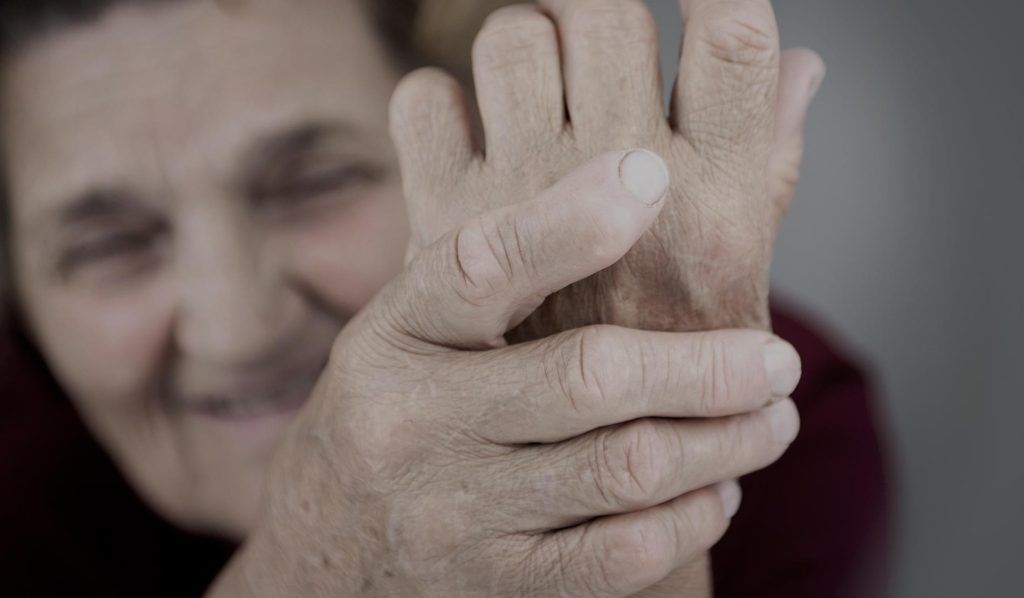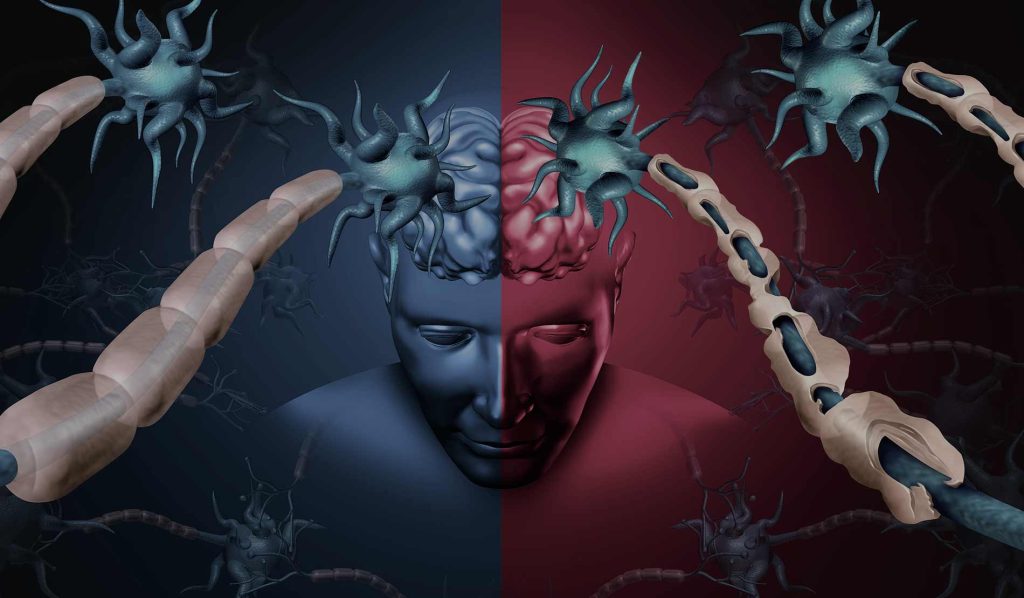Cell Therapy
Stem cells and neurological diseases, cerebral palsy, CP, and autism spectrum disorders, AST
Stem cells show promising results for treating children with neurological diseases such as CP and AST.
Stem cells and cerebral palsy, CP:
CP is an abbreviation of the Latin name Cerebral Palsy. Palsy meaning weakness or problems with using the muscles. Cerebral meaning, having to do with the brain. CP is caused by abnormal brain development or damage to the developing brain that appear in early childhood and affects a person´s ability to control his or her muscles permanently. Worldwide, the frequency is 2-3 cases/1000 live births 1. Of the approximately 100 000 children born in Sweden every year just over 200 are affected by CP. Behavioural problems are also common in children with CP, including neuropsychiatric disorders such as ADHD (attention deficit hyperactivity disorder) and autism spectrum disorders (ASD). There is no known cure for CP, however supportive treatments, medications, and surgery may help many individuals to reduce symptoms and disabilities while also improving mobility. This may include i.e. physical therapy and speech therapy.
Joanne Kurtzberg is one of the most prominent researchers performing clinical trials with umbilical cord blood stem cells for the treatment of diseases and syndromes that affect the central nervous system2.
In 2010, Dr Kurtzberg conducted her first trial on the safety and feasibility of cord blood to treat acquired neurological disorders like cerebral palsy 3. Subsequent randomized, double-blind, placebo-controlled phase II study by Dr. Kurtzberg examined the effect of a single dose of autologous umbilical cord blood. The study from 2017 followed 63 children between ages of one and six years who had cerebral palsy because of brain damage occurred before or in connection with birth, had similar positive study results 4. The participants were given a range of doses, from 10 million cells to 50 million cells per kg of body weight.
One year after treatment, all participants who received umbilical cord blood showed improvement in motor function and brain activity.
Children who received a higher dose of umbilical cord blood of at least 25 million cells per kg of body weight, showed greater improvements compared to children treated with a lower dose or placebo. This result is supported by two other randomized clinical trials within cell therapy, where they evaluated the use of cord blood stem cell infusion for the treatment of cerebral palsy in children 5,6.
Here you can find registered clinical trials with umbilical cord blood for the treatment of CP injury, which recruits:
https://parentsguidecordblood.org/en/trials/cerebral-palsy
If you want more information about a clinical trial click on the link for the registration number for the clinical trial you are interested in and you will get the registration for it on the clinical trial website: https://clinicaltrials.gov/
Contact information can be found in the description for the clinical trial.
Today it is not known which stem cells could be better for treating patients with neurological conditions such as autism and CP-injury, umbilical cord blood or mesenchymal stem cells, MSC from the umbilical cord.
In a study from 2021, by Amanat, et al., the effect of umbilical cord MSC was evaluated as a treatment for children with CP. The study included 72 children aged 4-14 years, with CP skada7. Half of the participants received one dose of MSC from cord tissue, and the other half received placebo treatment. All patients regularly participated in rehabilitation therapy during the clinical trial. To evaluate the treatment effect of the stem cells, several evaluation instruments were used that measure neurological symptoms, various bodily functions, and other functional abilities. Significant changes could be seen six months after treatment, when patients who received stem cells began to show significant improvements in motor function.
The children showed an increased ability for self-care and were better able to interact with friends and family and participated in different activities.
To assess the effect of the treatment, a change in the white matter of the brain was also measured, with Diffusion Tensor Imaging, DTI before and after treatment. DTI is a technology that can visualize nerve pathways and, for example, changes in the white matter in the brain. Data from DTI showed significant improvements in the structural integrity of the white matter of the brain for the patients treated with stem cells.
Stem cells and autism spectrum disorder (ASD):
Autism Spectrum Disorder (ASD) are a group of developmental disabilities that can cause significant social, communication and behavioural challenges. CP is the result of brain damage that occurs before, during or shortly after birth whereas the ethiology and pathogenesis of ASD are largely unknown although it is widely accepted that environmental, epigenetic, and inflammatory factors all contribute to the development of ADS. There are no medications that can cure ASD or treat the core symptoms. However, there are medications that can help some people with ASD function better.
Recent studies show that stem cell therapy might effectively cure CP. These advances have inspired the use of stem cell therapy in ASD (which is much more common).
The evidence base is increasing that treatment with autologous stem cells from the umbilical cord blood can significantly improve function of children with CP and other neurological diseases such as i.e. ASD writes Boruczkowski, et al., in a review published in 20198. The article is based on publications from PubMed and clinical trials registered at ClinicalTrials.gov and the purpose is to compile current knowledge and clinical use of umbilical cord blood. Several clinical studies also confirm the safety and efficacy of the use of umbilical cord blood (autologous and also allogeneic), including a meta-analysis of five clinical trials 9.
In early 2017, Duke University released the results from a phase I study on the safety of treating children with autism with a single intravenous infusion of their own umbilical cord blood10 .
The researchers found that among 25 children ages 2-5, more than two-thirds appeared to show improvements in speech, socialization, and eye contact. The trial included two evaluations: one at six months and another at 12 months. At the six-month evaluations, between 60 and 70 percent of the children showed improvements in aspects of their autism including sensory behaviours, receptive and expressive communication, and social withdrawal.
In one study by Dawson, et al.,11 180 children aged 2-7 years were randomized to treatment with umbilical cord blood or placebo and were evaluated 6 months post infusion.
There was no difference in improvement of social communication or AST symptoms between treatment and placebo groups. However, the sub-group of children without intellectual disability who were treated with cord blood demonstrated significant improved communication, increased sustained attention in eye tracking assessments, and increase in alpha and beta power on EEG compared to placebo.
Duke University recently opened a phase II randomized, placebo controlled, clinical trial, NCT04089579, testing cord tissue mesenchymal stem cells (MSCs) to treat AST. It will enrol 164 children ages 4-8 years. Estimated Primary Completion Date of the study is October 2022.
Expanded Access Program for the treatment of CP and other neurological diseases:
The term EAP comes from the FDA in the United States, where it is used to describe a program that allows patients with a serious illness or condition to have access to a trial drug that has been shown to be safe where the effect is still being studied and where there is no comparable or satisfactory alternative treatment.
The first expanded access program (EAP) of cord blood stem cell therapy for CP and other neurological diseases was launched in 2017:
https://parentsguidecordblood.org/en/news/cerebral-palsy-expanded-access-program-europe.
Dr Joanne Kurtzberg is a part of this program and the Cord Blood Association annual meeting in September 2019, Dr Kurtzberg stated that to date over 320 children have received treatment through this program.
The second EAP for the treament of CP and other neurological diseases with cord blood , was launched 2019 by FamiCord Group, where NextCell Pharma´s partner Polski Bank Komórek Maciersystych (PBKM) is an important part. The FamiCord-group collaborates with more than 1300 hospitals around Europe which means that patients from all over Europe will have access to innovative stem cell therapies.
To read more about the EAP for the treatment of neurological diseases with cord blood, click here:
https://parentsguidecordblood.org/en/news/cerebral-palsy-expanded-access-program-europe
Referenser
- Arneson, C. L. et al. Prevalence of cerebral palsy: Autism and Developmental Disabilities Monitoring Network, three sites, United States, 2004. Disabil Health J 2, 45-48, doi:10.1016/j.dhjo.2008.08.001 (2009).
- Sun, J. M. & Kurtzberg, J. Stem cell therapies in cerebral palsy and autism spectrum disorder. Dev Med Child Neurol 63, 503-510, doi:10.1111/dmcn.14789 (2021).
- Sun, J. M. & Kurtzberg, J. Cell therapy for diverse central nervous system disorders: inherited metabolic diseases and autism. Pediatr Res 83, 364-371, doi:10.1038/pr.2017.254 (2018).
- Sun, J. et al. Differences in quality between privately and publicly banked umbilical cord blood units: a pilot study of autologous cord blood infusion in children with acquired neurologic disorders. Transfusion 50, 1980-1987, doi:10.1111/j.1537-2995.2010.02720.x (2010).
- Sun, J. M. et al. Effect of Autologous Cord Blood Infusion on Motor Function and Brain Connectivity in Young Children with Cerebral Palsy: A Randomized, Placebo-Controlled Trial. Stem Cells Transl Med 6, 2071-2078, doi:10.1002/sctm.17-0102 (2017).
- Min, K. et al. Umbilical cord blood therapy potentiated with erythropoietin for children with cerebral palsy: a double-blind, randomized, placebo-controlled trial. Stem Cells 31, 581-591, doi:10.1002/stem.1304 (2013).
- Kang, M. et al. Involvement of Immune Responses in the Efficacy of Cord Blood Cell Therapy for Cerebral Palsy. Stem Cells Dev 24, 2259-2268, doi:10.1089/scd.2015.0074 (2015).
- Amanat, M. et al. Clinical and imaging outcomes after intrathecal injection of umbilical cord tissue mesenchymal stem cells in cerebral palsy: a randomized double-blind sham-controlled clinical trial. Stem Cell Res Ther 12, 439, doi:10.1186/s13287-021-02513-4 (2021).
- Boruczkowski, D., Pujal, J. M. & Zdolinska-Malinowska, I. Autologous cord blood in children with cerebral palsy: a review. Int J Mol Sci 20, doi:10.3390/ijms20102433 (2019).
- Novak, I. et al. Concise Review: Stem Cell Interventions for People With Cerebral Palsy: Systematic Review With Meta-Analysis. Stem Cells Transl Med 5, 1014-1025, doi:10.5966/sctm.2015-0372 (2016).
- Dawson, G. et al. Autologous Cord Blood Infusions Are Safe and Feasible in Young Children with Autism Spectrum Disorder: Results of a Single-Center Phase I Open-Label Trial. Stem Cells Transl Med 6, 1332-1339, doi:10.1002/sctm.16-0474 (2017).
- Dawson, G. et al. A Phase II Randomized Clinical Trial of the Safety and Efficacy of Intravenous Umbilical Cord Blood Infusion for Treatment of Children with Autism Spectrum Disorder. J Pediatr 222, 164-173 e165, doi:10.1016/j.jpeds.2020.03.011 (2020).




